Unit 3.5: Photosynthesis
Photosynthesis is an incredible chemical process that transforms energy from sunlight into chemical energy that can be used by plants and photosynthetic bacteria. The overall chemical reaction of photosynthesis can be summarized by the equation:
H₂O + CO₂ → C₆H₁₂O₆ + O₂
This process essentially transforms carbon dioxide and water into glucose (sugar) and oxygen—all thanks to light energy. This chemical magic first evolved in prokaryotic cells, and it has since paved the way for complex life on Earth.
Photosynthesis is divided into two major steps: light-dependent reactions and light-independent reactions, also known as the Calvin Cycle. Both of these occur in the chloroplast—an amazing structure inside cells that we’ll explore in more detail.
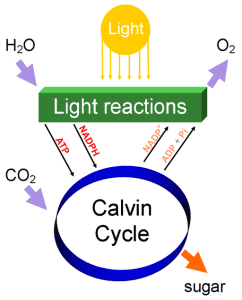
Chloroplast: The Photosynthesis Factory
The chloroplast is where photosynthesis takes place, and it’s divided into different compartments that have specific functions. The thylakoid membranes—which resemble stacks of pancakes—are the site for the light-dependent reactions. Within the thylakoids are special pigments called chlorophyll. When chlorophyll absorbs energy from sunlight, it excites electrons, allowing the entire process to kick off.
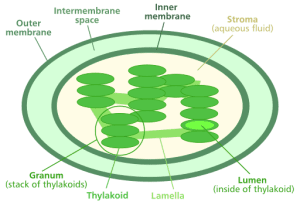
Light-Dependent Reactions
The light-dependent reactions start in the thylakoid membranes and play a crucial role in producing ATP and NADPH—two important molecules that will be used in the Calvin Cycle.
Here’s what happens:
Light hits the chloroplast, exciting an electron in chlorophyll inside Photosystem II.
This excited electron is passed through a chain of proteins known as the electron transport chain.
As the electron moves, hydrogen ions (H⁺) are pumped into the thylakoid space, creating a concentration gradient.
Water molecules are split (a process called photolysis) to replace lost electrons. This process also produces oxygen as a byproduct, which is released from the plant.
Eventually, the electron reaches Photosystem I, where it gets re-energized by more light. The electron is then transferred to NADP+, forming NADPH, an electron carrier.
Meanwhile, the H⁺ ions that accumulated inside the thylakoid create a strong urge to escape. The only way out is through a protein called ATP synthase, which uses the energy from the H⁺ movement to create ATP from ADP—the cell’s energy currency.

Light-Independent Reactions (The Calvin Cycle)
The light-independent reactions, also known as the Calvin Cycle, occur in the stroma of the chloroplast—the gooey, fluid-filled space between the thylakoids.
In this stage, the products of the light-dependent reactions, ATP and NADPH, are used to convert carbon dioxide into sugar. Here’s how it works:
Carbon dioxide enters the Calvin Cycle and is fixed by the enzyme rubisco (ribulose bisphosphate carboxylase).
This carbon fixation results in the formation of a compound called glyceraldehyde-3-phosphate (G3P), which can then be used to make glucose and other important carbohydrates like starch and cellulose.
Throughout the cycle, ATP provides energy, and NADPH donates high-energy electrons to help form the bonds needed for building glucose.
After these steps, the ATP becomes ADP, and NADPH is converted back to NADP+, which can then be recycled in the light-dependent reactions—keeping the photosynthesis cycle moving efficiently.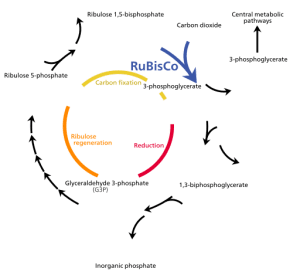
Photosynthesis: A Lifeline for Earth
The entire purpose of photosynthesis is to create sugar that organisms can use for energy. And as a nice bonus, it also produces oxygen, making it possible for us (and many other organisms) to breathe!
While understanding photosynthesis can be a challenge, it helps to visualize or even draw out the process—try to imagine the chloroplast as a busy factory, with raw materials entering, workers (enzymes) processing them, and products being shipped out.
Quick Summary:
Light-Dependent Reactions occur in the thylakoid membranes, creating ATP, NADPH, and releasing oxygen.
Light-Independent Reactions (Calvin Cycle) occur in the stroma and use ATP and NADPH to turn CO₂ into glucose.

AP Biology slyacademycom
Remember: Photosynthesis is a fundamental process that fuels nearly all life on Earth. It’s what allows plants to grow, which in turn feeds other organisms, including us. Without it, our world would look very different!
Key Takeaways:
Photosynthesis consists of two stages: light-dependent reactions and light-independent reactions (Calvin Cycle).
It occurs in chloroplasts using chlorophyll to capture light energy.
The end products are glucose (used for energy) and oxygen (essential for most living organisms).


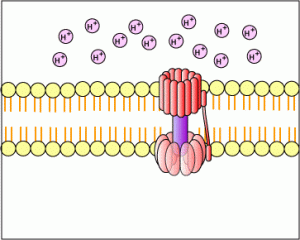
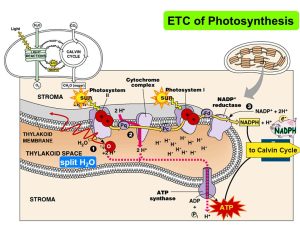


 4.1 Attribution Theory and Person Perception: Why We Judge People the Way We Do (Even When We’re Totally Wrong) Let’s be honest. We’ve all
4.1 Attribution Theory and Person Perception: Why We Judge People the Way We Do (Even When We’re Totally Wrong) Let’s be honest. We’ve all


